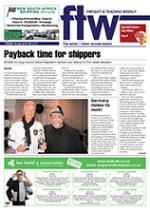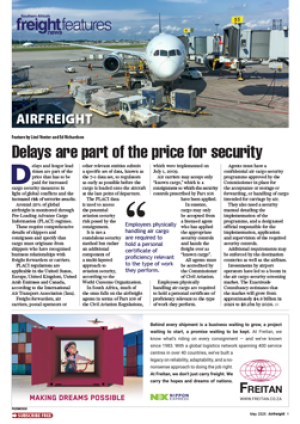The transport industry
has come up with three
“big ideas” to reduce
regional trade barriers
and open up new markets
in sub-Saharan Africa.
They include high-level
government intervention, a
reduction in red tape, and
an effective, integrated rail
system that would reduce
port and road congestion.
Trade barriers are often
very contextual, said
South African Association
of Freight Forwarders
(Saaff ) executive member,
Philip Wyllie, one of
several participants in a
roundtable discussion on
the topic at the recent 2014
African Transport and
Infrastructure Show held
in Sandton.
“For example Ghana,
in recognising that the
country needs transport
infrastructure to facilitate
trade, has introduced
additional levies to
fund the necessary
developments. But the fees
are expensive and will also
impede trade,” he said.
Furthermore, transporters
often have to build in all
sorts of unknowns along
their journey, with fees,
levies and other changes
occurring often without
prior notice.
Zambia’s minister of
Transport, Works Supply
and Communications
agreed that barriers to
entry across the region
were all different and
were often not well
communicated. He
suggested that industry
stakeholders lobby
for common regional
legislation and intraregional
cooperation.
Dialogue plays an
important role, according
John Omingo, head of
commercial shipping at
Kenya Maritime Authority
(KMA). The presidents
of Kenya, Uganda and
Rwanda
meet every
two months
to discuss
barriers to
trade, training
needs and
capacity
building
in order to
find joint
solutions to
these regional
challenges.
“These
solutions are
then issued
as high-level
instructions
to industry
stakeholders
such as
ports or rail
authorities
and
parameters
and timelines
are set,” he said.
Solutions are clearly
critical. Saaff vice
chairman Mike Walwyn
pointed out that red tape
and the delays it causes
were becoming a “serious
obstacle” to national and
regional trade. He suggested
that innovative and creative
ways be found to sidestep
bureaucracy and cut down
on red tape, pointing to the
Western Cape government’s
Red Tape Hotline initiative
by the Red Tape Reduction
Transversal Workgroup
(RTRTWG) as a prime
example of innovative
thinking.
A seamless system of
freight transport leaving and
arriving at ports to avoid
the major delays caused
by vehicle congestion is
vital to reducing transport
costs and removing trade
barriers, said Walwyn.
“Currently there are around
5 000 vehicles entering
and departing the port of
Durban per day. Projections
are that this will climb to
17 000 per day in five to 10
years.” He suggested that
an efficient, integrated rail
system was the answer to
this challenge.
Top trade barriers
1. Bureaucracy and red tape
2. Lack of infrastructure –
particularly inland ports
and harbours, including dry
ports
3. Fees and levies
4. Lack of common regional
legislation and integration
5. Lack of funding for rail
and port equipment and
infrastructure

